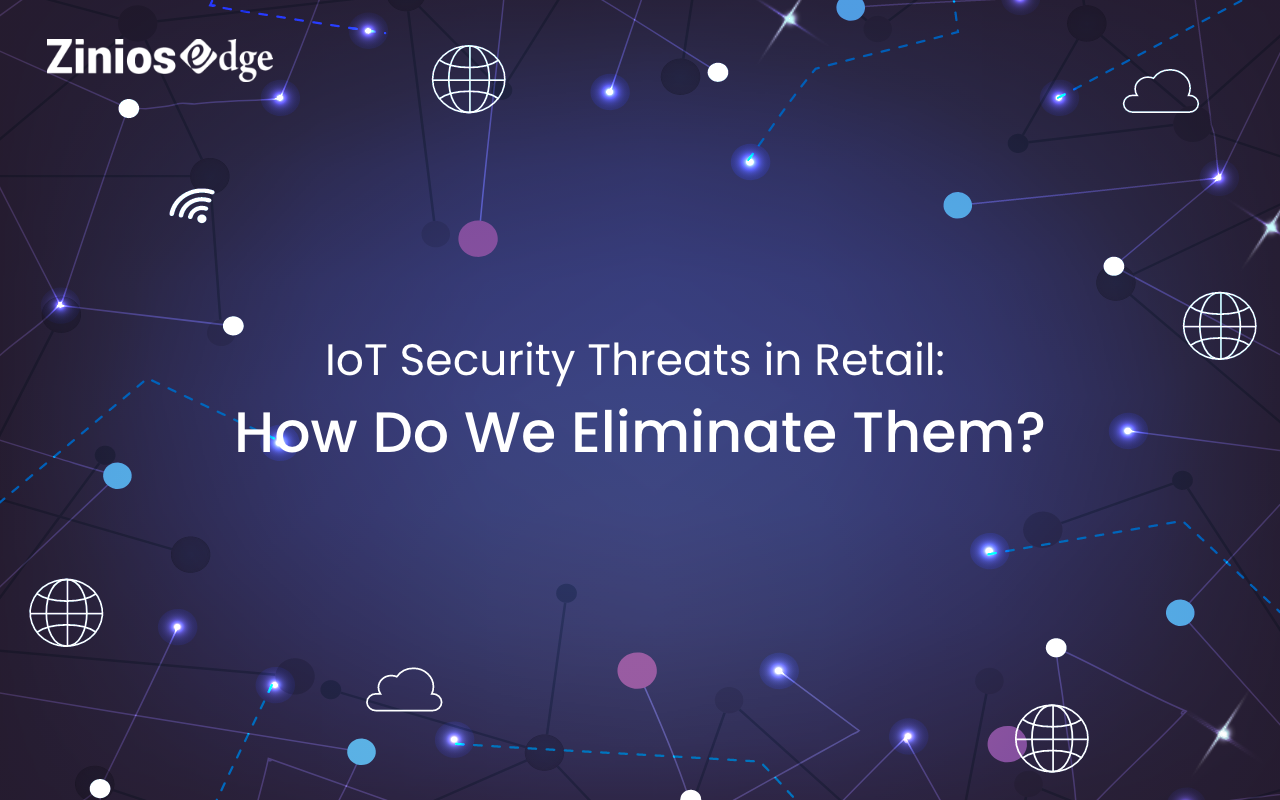
IoT Security Threats in Retail: How Do We Eliminate Them?
Global Market Insights predict that by 2024 IoT in the retail market is supposed to hit more than $35 billion Globally. The growth of connected smart devices on the internet like machines, cameras, and sensors have been exponential over the years. And it is growing to new dimensions such as IIOT (Industrial Internet of Things), IoMT (Internet of Medical Things), and so on.
Since the sector is being highly competitive, the security threats it carries along is also gamut. As the retail industry is more dealing with endpoint devices, it can be easily compromised, and vast data exfiltration can result, it is essential to eliminate anyway.
CSO online says it is found that over 90 % of data exchange across IoT devices are not encrypted. And it is evident that almost all of them are endpoint devices that include the devices using in retail sectors.
However, since 70% of retail owners hope that IoT can increasingly improve their business, the retail industry is at the forefront to take IoT desperately serious.
A recent study estimates that by 2025 there will be approximately 41.6 billion connected devices due to the adaptation of IoT across countries and industries. With an annual growth rate of 28.7% over the next five years, IoT in the retail sector is estimated to overtake more than $94 billion in revenue.
With so many connected devices on the internet, a recent survey pointed out that the retail industry suffers over 4000 cyber threats a single year. Information is the most valuable commodity of all, and the retail sector is the pioneer in the case of most online transactions, makes it up for 8% of all data breaches.
This scenario is quite alarming, so how can the retail industry overcome the potential IoT security threats?
Let’s take a look.
Internal network segmentation
It is best to keep your internal retail network segmented, mainly because there is no such thing called foolproof security, which can be adapted by retailers.
Hence companies are aggressively adopting diverse network segmentation designs such as External Network, Demilitarized Zones, Guest networks, IT management network, Server network, VoIP network, Security Network, Physical Security Systems, and Industrial control system.
Fredrik Lindstrom CIO Advisory @ KPMG says, “Splitting the network into subnetworks is the best practice to phase out conventional security approaches.” And he says network segmentation is one for poorly addressed security practice by far.
By internally segmenting your network, you can minimize the damage caused by the security breach by limiting your network access using firewalls and implementing network boundaries.
With the implementation of internal network segmentation, gaining access will be authorized with multiple levels of authentication methods so that retailers can process credit card transactions on high-security environments within enterprise networks.
End-to-end Security Integration
Companies have a long history of deploying insecure IoT devices with vulnerable firmware to their networks. Especially in the retail sector, business owners ideat a lot to ease out the shopping experience of people as automated check lot gates (PoS), RFID tags, GPS sensors, etc.
In addition, to enhance supply chain management, they will employ all these IoT solutions to ease out the business cycle. In fact, these endpoints are more vulnerable and more prone to get hacked by cybercriminals.
Moreover, in other tech-sectors, the primary culprits are the technology professionals deploying devices with default passwords.
Once hackers have gained access to the network, all it takes is a simple network scan to find other insecure devices. This helps them to move across the systems to detect high-valued accounts with high-value data.
They would also have the mandate to run malicious scripts and commands to monitor network traffic on local subnets.
If you are integrating security into the development and design of your retail networks, then your exposure to risk is reduced significantly. Security is a priority beyond hardware and not an afterthought.
Yet, implementing a few measures such as Wireless Intrusion prevention systems (WIPS), strong anti-virus protection plans, network encryption (Crypto-technologies) will help to reduce the risk and eliminate unanticipated threats from the business environment.
This is due to potential vulnerabilities that could lead to data breaches. This is never a permanent solution. As the threat evolves, so should your preventive measures.
Evaluating Third-Party Vendors
Vulnerable smart devices on the network can act as the main point of entry on your network. If your partners are not security conscious or share the same principles as you, then your network has a significant chance of attacks on the surface.
According to the Ponemon Institute survey, “a stunning 87 % of respondents say it’s likely their own organizations will experience a cyber-attack such as a DoS attack caused by unsecured IoT devices or applications in the next 24 months, and 84 percent expect their organizations to experience a data breach due to same”.
Surprisingly, they have found that many of the retail operators don’t have a proper inventory of IoT devices and not properly assessing their party IoT risks.
The chances are high for cybercriminals to compromise these point of sale systems from third party contractors with Virtual private network access to the network. They will cause breaches that can impact millions of users.
However, these types of third party contracts can be avoided by leading effective supply chain management protocols that function effectively and properly vetting your vendors before allowing network access.
Go through the supply chain until the end and ensure that your subcontractors and vendors follow adequate security practices.
Follow IoT Security Best Practices
Maintaining your retail store secure is an ongoing undertaking. So by conducting annual cybersecurity practice workshops, you can revisit and re-educate each and every employee of your organization with evolving security threats and preventive measures.
So even if the smart sensors and devices aren’t generating sensitive information, we can still encrypt that data.
To get an in-depth illustration of your risk exposure, you can develop an inventory of our retail network and make it mandatory to upgrade the organization firmware and change default passwords. Likewise, a lot of security best practices are recommending by the IoT security foundation regardless of the industry that make use of IoT devices.
Sometimes companies also insert backdoors to enable remote access. While this method helps customer support, malicious actors will aim them. So don’t buy any new devices unless the manufacturer has referred to all known vulnerabilities.
IoT Network Monitoring (Real-time)
First and foremost, after segmenting the network, retailers must determine whether there is any smart device or sensors connected to the system and block any anonymous entity.
To illustrate, curb the IoT device’s access to the relevant sources. Never let any additional access and leave any loop for anyone to reach through the network. This sort of regular meticulous monitoring practice will help you to fend off external intruders, and other sorts of online attack prompt.
Establish connectivity rules based on the behavior of the smart device, only allow devices to communicate information with a specific source. Assigning a limit in particular to the requirement and discouraging any kind of attempts to breach the limits also needs to mark.
For this, we can leverage AI to monitor any abnormal activity on the network by any connected smart devices. Network monitoring software that is powered by AI technologies will filter out any unusual behaviors or breaching attempts from any devices
And with that, it would be easier to track and shut down any compromised devices if you can map out all the connected: things” on your Retail network
Conclusion:
The security threats seemed to be increasing as more retail partners adopt IoT devices more into the business. However, as the scope of IoT expands for retailers, the risks also will grow exponentially.
Unsurprisingly, you can expect to find new forms of vulnerabilities on every new device on the market, and as a result, retailers should keep an eye out and be proactive to stay a step ahead of hackers.
Ultimately, as any problem has its solution, we have a lot of resolution to mitigate IoT security threats in the retail sector. As we have discussed above, implementing stringent security measures such as third-party vetting, network segmentation, network monitoring, and so on.





Comments
No comments yet.